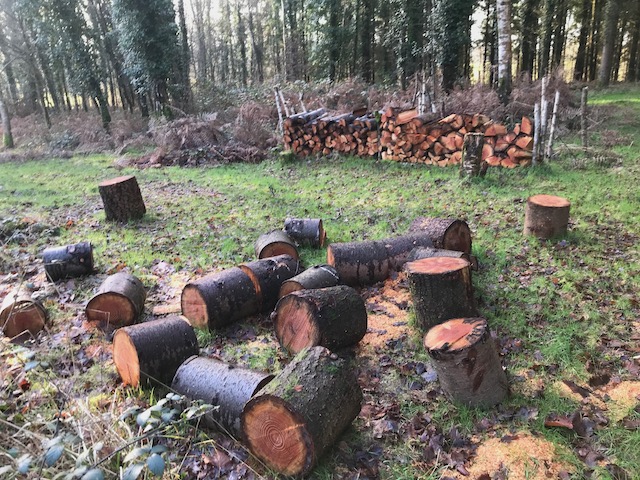This afternoon I met with two trustees of Hazel Hill Wood to develop some ideas for a funding bid to support more regenerative use of timber to maintain our off-grid buildings. I said at the end of the call I’d write up some thoughts on a what a five-year plan could look like. Here is what I wrote down – stimulated by a very thought-provoking conversation with my excellent trustee colleagues. I’m putting it here rather than on the Hazel Hill website as this is by no means policy! Just a set of ideas, captured to enable further discussion.
Five-year vision for developing Hazel Hill as a centre for regenerative forest management and traditional construction skills.
At Hazel Hill Wood we have a unique combination of sustainably managed forest, off-grid buildings and a charity with a mission is to use timber from the wood as part of a regenerative cycle of building repair. Our ambition is to work with these gifts to increase local biodiversity and woodland thriving, build community resilience and wellbeing of all who come into contact with the wood.
While we reach all of these ambitions to some extent through our current charitable activities, we see the opportunity to unlock greater benefits for the ecosystem and local community by establishing the wood as a centre for learning about how timber can be used as part of a regenerative local construction material. We describe this process as regenerative because it has the potential to have zero negative externalities: harvesting timber in the right places can actually increase woodland health and biodiversity; the timber we harvest can be used to re-establish a range of historical, rural practices, including coppicing, hurdle-making, horse-drawn timber extraction and traditional green-wood construction. Training local people in using these skills can help to enhance the rural economy while helping to maintain the heritage of local buildings. And the wellbeing of all is enhanced through extended contact with the living world through nature connection.
To shift to this mode of operation we envisage taking three phases over five years.
Phase one – from seed to seedling
In this first phase we assess the state of the current system and create some of the infrastructure to enable this new activity to happen at the wood.
- Forest survey – establishing the health of the ecosystem, possible timber for harvest now and possible timber for future extraction and opportunities to enhance biodiversity through timber harvest.
- Building survey – establishing the long-term maintenance needs and priorities of our heritage timber buildings.
- Skills survey – understanding the local skills landscape and how training at Hazel Hill wood could enhance the local economy.
- Re-establishing connection with rural construction tradespeople.
- Creating working area – wood seasoning shed, tools shed and outdoor classroom
- Initiation of volunteer programme for simple construction skills using timber in the forest.
- Initial harvest of coppiced timber
- Initial harvest of roundwood poles for seasoning.
Phase two – from seedling to sapling
In this phase we increase the scale of our regenerative work, starting to work with wood harvested and seasoned in Phase one while increasing our harvest of timber from the wood. In this phase we grow our education programme around how we see the wood and the buildings as part of a continuum, a process of which we are the stewards, adapting to the needs of the ecosystem and the people who we bring here to heal and learn through connection with the living world.
- On-going habitat creation and monitoring in areas where timber has been harvested.
- Maintenance forestry – In order to grow trees for timber, some tree pruning needs to be done to create timber of good quality. We need to develop local skills in how to plan and carry out tree maintenance.
- Running courses in green wood construction skills.
- Using seasoned, sawed timber to carry out major upgrades to the structure of our heritage buildings, including new decking for the Oak House and Forest Ark.
- Invitation to other local crafts people to run training courses at our site.
- Growing programme of volunteer activities engaged in a range of conservation and heritage construction projects.
- Growing education programme, offering training in the thinking behind the regenerative principles on site.
Phase three – from sapling to tree
In this third phase the operations are more self-sustaining. The process of continuous cover forestry is well-established in the wood, with timber harvested at a rate of 1% per year providing a steady rate of firewood and construction materials for the charity as well as surplus for sale into the local economy. The programme of rural forestry and heritage construction skills training is self-sustaining and as well as bringing in revenue for the charity, is part of the active continuous maintenance of our unique heritage buildings. The site will be well known as a demonstrator project for regenerative principles that can be replicated more widely.


Leave a Reply